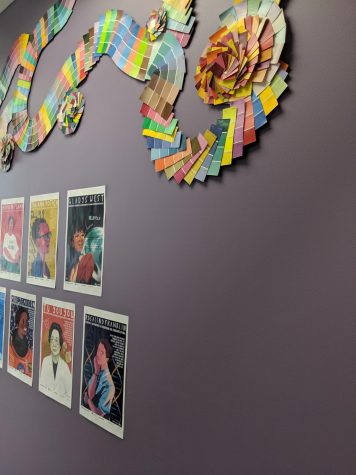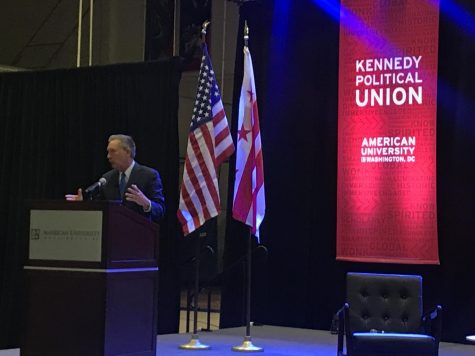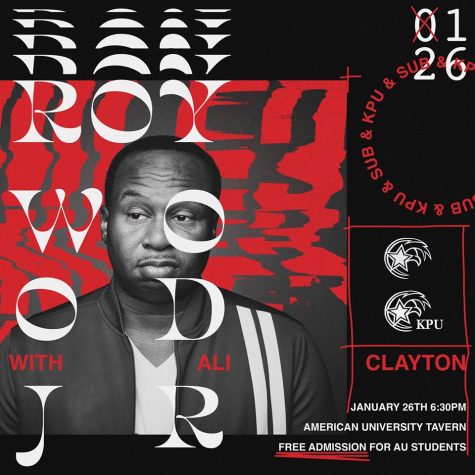White Privilege in Study Abroad: The Racial Divide
Sarah Snead’s experiences of personal development and growth are common among college students who study abroad. She is a junior studying environmental studies, who was in an immersive international program last semester in Nairobi, Kenya.
“It was the kind of experience I was looking for,” Snead said. “I wanted to grow in some way, and I did, and I loved it.”
Snead is among the over 70 percent of AU students who will study abroad at some point during their undergraduate career. In comparison, according to the National Association of Foreign Student Advisors, the number of students studying abroad only represents about 1 percent of all U.S. students.
But a more troubling trend in national study abroad participation is the racial disparities among students who do end up participating in international programs. According to NAFSA, 76.3 percent of students abroad are Caucasian, 7.6 percent are Hispanic/Latino American, 7.3 percent are Asian or Pacific Islander, 5.3 percent are African American or black, 3 percent are multiracial and 0.5 percent are American Indian/Alaska Native.
Daniel Obst is the deputy vice president of International Partnership at the Institute of International Education, an organization that aims to make international education more diverse and accessible for all students. Obst says that students are missing out on an important educational and developmental experience if they do not go abroad.
“We would like to see students from underrepresented groups having the opportunity to study abroad,” he said. Students who go abroad, he added, are more likely to graduate on time and gain both global understanding and soft skills that are valuable for future careers.
But minority students may face unique obstacles, according to Trixie Cordova, the student outreach coordinator at Diversity Abroad, a program that seeks to give underrepresented students access to international education.
She calls them the four Fs: fear, faculty, family and finances.
“Some of us have never left our hometown, or our state or the United States in general,” Cordova said. “There’s a lot about that that students might find frightening, that might limit their desire to study abroad.”
She said faculty can unintentionally present challenges as well—advisers who look at a student’s career track, major and credits hours and encourage them to try another time.
But for Cordova, who is Filipina and a first-generation college student, one of the biggest factors at play is family.
“For me, and for maybe students who are also second- or first-generation students, there’s a lot of other obligations that they may have to their families that makes it really challenging for them to take that time to study abroad, even if it is two weeks, or a semester or a year,” she said.
Some families might rely on their English-speaking children to translate, to care for younger siblings or even to bring grandparents to the doctor. Parents who come from countries with different approaches to education might also make parents unfamiliar with the benefits of study abroad programs.
“A lot of families came to the United States for the purpose of their son or daughter to attend and graduate from an American college or university,” Cordova said. “Study abroad sometimes just seems kind of outside of left field. You know, ‘We came here for you to go to school and graduate on time, but it sounds like you are trying to go on vacation to Paris.’ Sometimes those are the kinds of things students have to dispel.”
Often, a large obstacle in the path of any student is funding.
“My parents had a lot of hesitations financially,” Snead said. “We talked about it a lot.”
To help students cut costs, AU Abroad offers multiple Mobility Award scholarships of up to $2,500, which are awarded based on merit and financial need, along with school-specific awards and summer language awards. Still, Snead felt that she did not receive adequate information about study abroad scholarships.
“There are definitely flaws in the system, and I think the University can definitely take steps to make [study abroad] more accessible to students,” she said.
While Devki Gami, a junior studying abroad in India, agrees that AU Abroad should increase awareness of its scholarships, she felt that the University did try to make the abroad experience accessible to as many students as possible.
“AU Abroad was extremely helpful,” she said. “My adviser was so awesome in helping with the entire process, from the time I was applying to actually being in India, and answering any and all questions I had.” She said she was particularly concerned about financial aid, but her adviser assured her academic scholarships would still apply.
For students nationwide who do need extra help, outside organizations can provide much-needed funds. The IIE’s latest campaign, Generation Study Abroad, is a 5-year initiative that aims to double the number of students studying abroad. The initial phase of the program involves increasing participation in study abroad through scholarships. So far, the program has 142 partners, including the State Department, The New York Times and the government of Ireland. Ultimately, Obst says a main focus of the campaign is marketing study abroad specifically to minority groups.
“Study abroad sometimes just seems kind of outside of left field. You know, ‘We came here for you to go to school and graduate on time, but it sounds like you are trying to go on vacation to Paris.’ Sometimes those are the kinds of things students have to dispel. ”
“We need to change the way study abroad looks,” Obst said.
Even the State Department agrees. It offers scholarships aimed at increasing diversity; in particular, the Gilman program attempts to target underrepresented groups—59 percent of scholarships awarded last year went to minority students, according to State Department statistics.
Ethan Merritt, the assistant director of AU Abroad, believes that it is also important for students to plan ahead with their academic adviser to make the process go smoothly.
“There does not need to be a big financial discrepancy between studying abroad and staying in DC,” Merritt said.
Still, although merit awards and financial aid apply to tuition abroad, work study does not, which may leave some programs out of reach for students relying on that income. In addition, Merritt noted that housing and dining fees at other universities can cost more than at AU. Passport fees, visa fees and airfare can add up quickly as well.
Though the University does not keep statistics on the demographic breakdown of students who go abroad and does not have any specific campaigns targeting minority students, AU Abroad recently reached out to the Frederick Douglass Distinguished Scholars Program to help students in the program negotiate studying abroad.
Despite the options available, it is still the nonfinancial challenges that may win out at the end of the day.
“I know for me, study abroad was the first of what would become a couple of different international excursions,” Cordova said. “And while I think my parents were very supportive, there was a part of me that felt that I wasn’t being independent and brave; I was being selfish and abandoning my family.”






